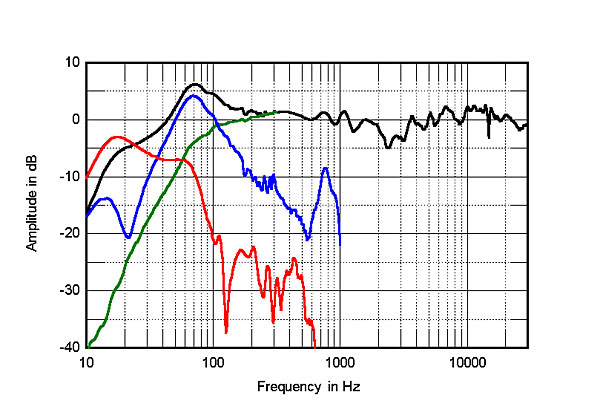Hi Lloyd,
I would first caution that comparisons of cone area will make for reasonable sanity checks and some quick litmus testing, but there are many variables involved in overall headroom across the spectrum, and most often the correct answer is some version of "it depends." Comparisons are more direct and easier to conceptualize with fully sealed systems, while ports and other acoustic loading augment, extend, or compliment output in more frequency dependent ways, and are harder to dimensionally equate to cone area.
One important understanding to start with is that maintaining the same SPL output at lower and lower frequencies requires 4x the volume displacement for every octave. The relationship is a squared function. Here are two useful practical applications of this reality:
While surface area is a useful figure to understand, ultimately we care about headroom, distortions, and efficiency to the degree it limits output. In an extreme example we could consider the case of a 6" woofer with 100dB@1W/1m sensitivity and a 15" cone that is only 86dB@1W/1m. The woofer needs 25x the power to match the SPL of the 6", despite the cone area advantage. We really care about the combination of sensitivity at the frequency range of interest (dictated by box size, type, and the woofer), the power available or needed, and what distortions and compression might occur due to limits in power, driver excursion limits, and distortion from the woofer as each are increased. Different approaches with size of woofers, size of enclosures, power, and enclosure type will tend toward specific strengths and characteristics, but there are always outliers and a wide range of performance trade offs.
- A sealed speaker requires 4x as much excursion to produce 30Hz as it does 60Hz, and 16x more excursion at 20Hz than 80Hz.
- In order to produce the same SPL under the same conidtions, an 18" woofer producing 20Hz and a ~5" woofer producing 80Hz will move the same distance in/out.
Surface area is directly related to all of these things, so when you increase surface area you will also raise headroom, lower distortion, increase efficiency and have greater SPL capabilities.
I'm not sure if these measurements covey the entirety of the subjective improvements that having larger woofer surface area bring to the table, but I don't think it's a coincidence that the great majority of speaker manufacturers increase woofer surface area to a massive degree when you look at their cost-no-object systems.
Thank you both, and i think between the many answers, i am starting to get a picture in my mind.
1. Yes, as with speakers, sources, amps (Class A, A/B, Tube, SS, etc), execution is always the ultimate deciding factor in true quality. Any amateur stats, specs are generally no more than guidelines and nice-to-knows
2. That said, understanding some of the fundamentals does provide general direction to those of us who are just starting to investigate
3. For me, it seems clear that from a number of audiophiles with substantial spaces and substantial systems, that deep, effortless bass has correlated with a sense of space, scale and realism that (before being able to reproduce such deep bass), these audiophiles were not able to find an alternative way of reproducing
4. Additionally, (like with Class A amps where heat and weight generally play a big part in the ultimate design), it seems fair to assume that large cones are going to play a part...as clearly evidenced by the Genesis towers, the Thor, the Velodynes, JL Gotham, even the Gryphon tower is SEVERAL 8" inch cones)
5. Setting aside the increased complexity in set up from multiple subs (a big issue no doubt)...the idea of de-pressurizing the sub-bass elements of the system with significant power, significant cone surface area (and P-P movement with all the requisite magnet structures, etc, etc)...seem like a good direction of travel for a SOTA design. This is either many, many smaller cones...or fewer very large cones.
6. Factoring in then the complexity of multi-subs bring...not to mention the fact that our living room will not accommodate multiple sub locations...it then drives us towards fewer subs (perhaps 2)...where by definition then we must look only to much larger cones
7. As a ballpark to start with...and then its about actual displacement of air, etc, etc...it sounds like probably somewhere on the order of 4 x 18" cones is a great place to be ready to start...perhaps 2 x dual-18" subs to keep set up perhaps somewhat more manageable. And if they are exceedingly well designed and then given the correct power, systems for setup/integration perhaps even servo, etc...we have the ability to stick to this (as opposed to up to 6 x 18" cones).
And at this stage...we really get to test the theory of whether this is as much a transformation as others have described in their own systems when their already large speakers were then further reinforced with major sub-bass systems. The one relevant data point for me is that I know I would not do without the Velodyne DD18+ in the system which is one 18" cone, designed by an experienced company, set up by their distributor.
Last edited:















